
All categories
Featured selections
Trade Assurance
Buyer Central
Help Center
Get the app
Become a supplier

(7360 products available)
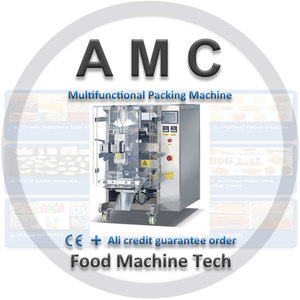
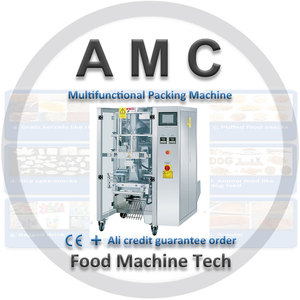
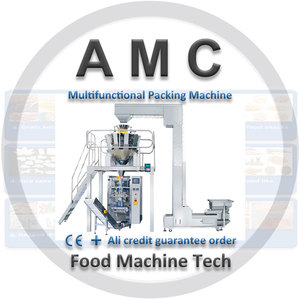
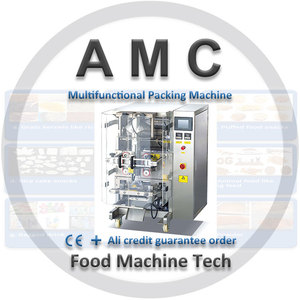
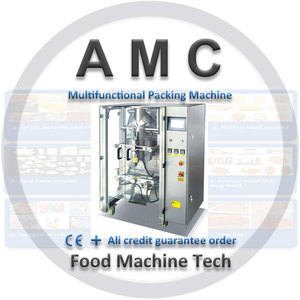
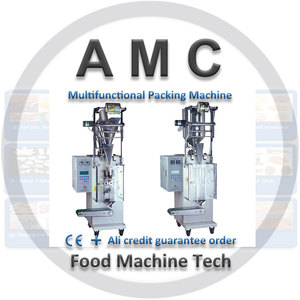





















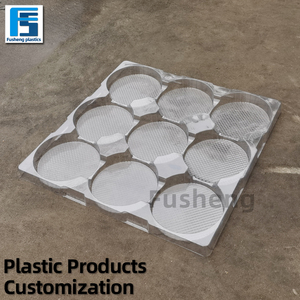
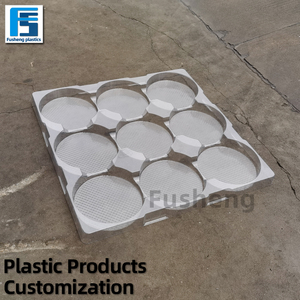

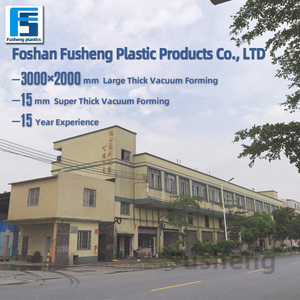
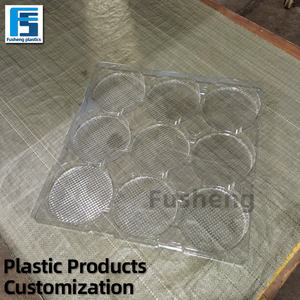
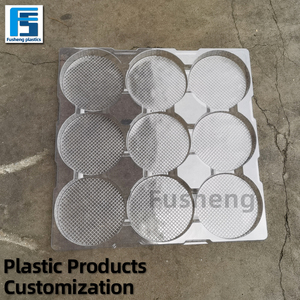


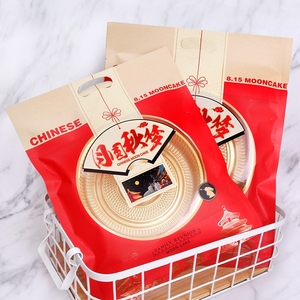

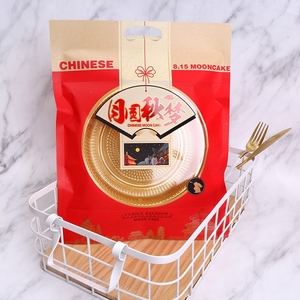
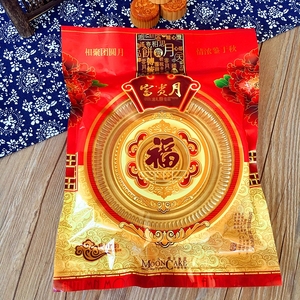
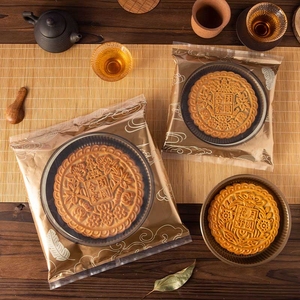
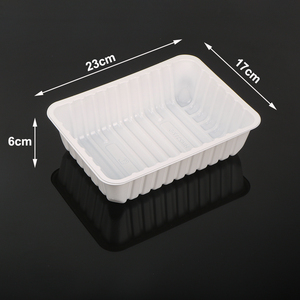
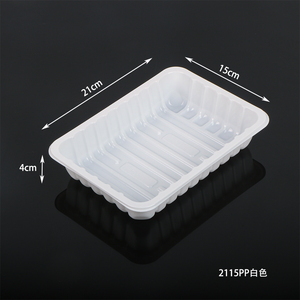
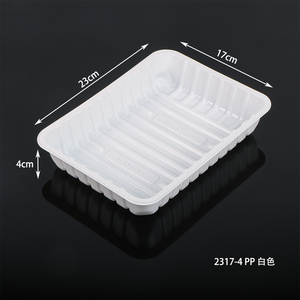
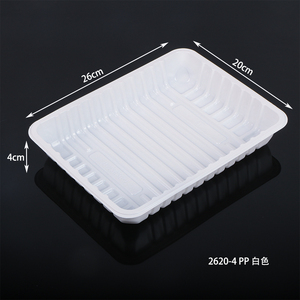

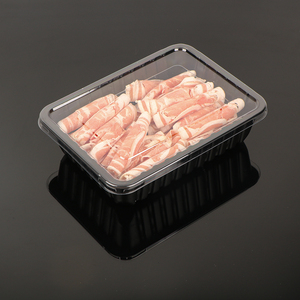
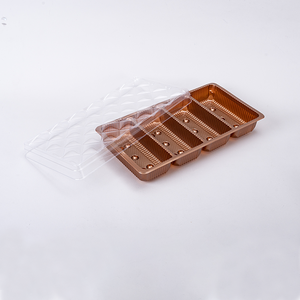
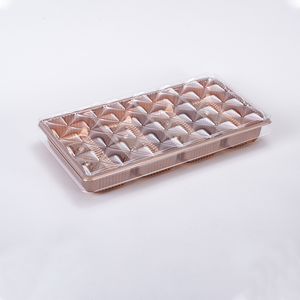
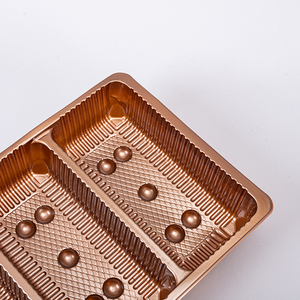

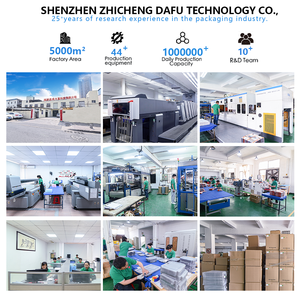

Thermoforming tray packaging comes in several types and each is meant to meet the different needs of storing products. The selection of which kind to use, depends on things like, the product’s nature, the market's expectation, and the manufacturer’s resource capability.
Blister trays
These are perhaps, one of the most popular types of thermoforming trays that are mostly used in the pharmaceutical and retail industries. They are made of a rigid plastic base and have a thin plastic cover that is usually, heat-sealed to the base. They are designed to show the product clearly to the prospective customer and protect it from things like tampering and adverse environmental factors.
Clamshell trays
These types of trays are also very common in retail packaging. They are made by folding a single piece of plastic around a product so, that the two halves can snap shut. Easy-to-open, this packaging is very secure and also offers a very good visibility of the packed product.
Skin packaging trays
Skin packaging involves a thin film that is vacuumed tightly around a product and a backing board. The film is very transparent and provides excellent visibility of the product. This type of packaging is ideal for irregularly shaped products since the film can be molded around them to give a perfect fit.
Custom thermoforming trays
Standard trays may not be very effective for some products. In this case, packaging manufacturers will often make bespoke packaging solutions and design thermoforming trays that will conform to a product's specific shape. The bespoke options will be based on the product's features and packaging goals.
Disposable food containers
Because of their durability and the ability to retain heat, thermoforming trays are ideal for packaging food. These are either single-use or can be washed and used again containers and often have lids that fit very securely to keep food fresh.
The thermoforming trays design can play a huge role in the performance and visual appeal of the packaging. So, several elements are usually considered during the design stage.
Material selection
Manufacturers prefer certain types of materials for making thermoforming trays, depending on the use they are intended for. Polyethylene terephthalate, for example, is highly recyclable and durable so, it is suitable for food packaging. Polyvinyl chloride is very versatile and easy to mold. Polypropylene is very tough and flexible, thus, great for providing an impact-resistant surface.
Tray design
The shape of a thermoforming tray will depend on several factors. These include the product it is going to store, distribution logistics, and, storage considerations. For instance, a tray designed for food storage may be deep and have compartments in it, while one used for tools may be flat and have no partitions.
Sealing and bonding
A properly made tray will ensure that the product inside is very well protected. Heat seals are used to bond the lid and base of blister packs to ensure they are tamper-proof. Therefore, the sealing technique must also consider the product’s shelf life and the need for easy opening by consumers.
Printing and labeling
In the current market, packaging is arguably one of the best and most effective ways manufacturers use, to promote their products. Printing processes will enable them to have vibrant colors, images, and information. This will improve the package’s aesthetic appeal and give potential customers more information about the product.
Sustainability considerations
Today, consumers are becoming increasingly aware of the impact packaging on the environment, so, many manufacturers have started to use eco-friendly materials for their thermoforming trays. These may be made of recycled plastics or sources that can be recycled. This will help pack and promote products while at the same time, promoting environmental conservation.
Thermoforming trays are quite versatile and are commonly used across a variety of industries to meet a lot of different packaging needs. Below are some of the most common applications.
Retail packaging
Many retailers use thermoforming blister packs to showcase and protect small manufactured goods. Retail items like jewelry, electronics, and hardware tools are often encapsulated in blister trays. This will provide a clear view while also giving a secure and tamper-evident protection.
Food packaging
The food industry equally uses thermoformed trays to package perishable products. These trays are used for meat, vegetables, fruit, and ready-made meals, and offer an airtight seal to prolong freshness and extend the product shelf life. Some food packaging trays are designed for single use, while others can be washed and reused.
Medical and pharmaceutical packaging
Ventilated, sterile, and usually, easily opened are the key characteristics of thermoforming trays, making them ideal for medical and pharmaceutical packaging. They are used to store pills, medical equipment, and surgical implements. Always tamper-resistant, these trays ensure users are protected and that medical products are carried safely.
Electronics packaging
In the electronic industry, packaging has to protect delicate components from damage during transportation and handling. This is why they use thermoformed trays to hold circuit boards, batteries, and other electronic parts. They are designed to fit the shape of each component and prevent movement within the outside carton during shipping.
Cosmetics packaging
Cosmetics companies use, blister packs, to present make-up products, skincare items, and toiletries in an attractive manner. The clean, sophisticated look of the plastic blister trays makes them ideal for showing beauty products on store shelves. Also, they provide protection from contaminants for products like creams and powders.
When a buyer is considering purchasing thermoforming trays, they have to consider a number of specifications. Additionally, proper maintenance of the trays is necessary, as it will ensure, the packaged products remain protected.
Key specifications
Some specifications to look out for when shopping for thermoforming trays include, the material have to be durable, rigid, and flexible. For example, PETE has high clarity and is very hard. PVC is stiff, easy to shape, and quite inexpensive. Polypropylene is very flexible. The thickness, which ranges from 0.5 to 3 millimeters, should be determined based on the weight of the product it will hold. The larger the number, the stronger, and more rigid the sheet. The type of tray should be like, clamshell, blister, skin, in-vacuum, or custom. An effective seal is critical for containment and product freshness, as this is its main function. The sealing options include heat sealing, pressure-sensitive adhesives, and ultrasonic sealing. This will determine whether the tray is recyclable or not. Buyers must ensure they select eco-friendly trays that offer environmental benefits through recyclability.
Maintenance tips
Below are some ways buyers can maintain their thermoformed trays.
Proper storage
All thermoforming trays have to be stored in a cool, dry place away from direct sunlight. This will prevent them from becoming warped or discolored. So, ensure the storage area is free from dust and debris that could get to the trays.
Cleaning
Customers should rinse reusable thermoforming trays, with warm soapy water, and a soft cloth, to remove food or product residue. Never scrub hard on the surface as it may cause scratches. Further, they should be dried completely before storing, them to prevent mold or bacteria growth.
Avoiding harsh chemicals
Buyers also need to avoid using bleach, acidic or abrasive cleaning agents, as these may cause the material to degrade. Only gentle, non-abrasive cleaning products will have to be used, to preserve the integrity of the trays.
Regular inspections
Customers should frequently check their thermoforming trays for any signs of damage like cracks, warping, or discoloration. If a tray is damaged, its ability to give an effective protection to the product will be compromised. So, it is recommended that old or damaged trays be replaced.
Transportation handling
Great care must be taken while transporting thermoforming trays, as they can easily break or be damaged. Whoever is moving them is to be trained to handle them carefully and assure that all necessary, safety precautions are observed.
To choose quality thermoforming trays, one must consider several important criteria. Below are some key factors to look out for.
Material quality
Packaging manufacturers usually use, high-quality plastics such as polyethylene terephthalate, polyvinyl chloride, and polypropylene. They ensure they use durable and rigid materials which are neither affected by temperature changes nor have a high risk of breaking. This will ensure, they provide good protection to the product and are resistant to many different elements.
Clarity and thickness
Customers will want what is referred to as optical-grade clarity from their thermoformed trays. This will provide a clear view of the stored product for marketing purposes. Apart from this, high-quality trays will be manufactured in varying thicknesses. Usually, between 0.5 and 3 millimeters, as this will ensure adequate support and be easy to thermoform.
Customization capability
For products that require specific shapes or dimensions to ensure their effective storage, buyers should ensure manufacturers offer them customized thermoforming trays. They will also need, advanced tooling and technology, as they will ensure, the customized thermoforming trays are made accurately and in large quantities.
Sealing and compatibility
Trays with strong, effective seals are essential in ensuring the products are well contained and they do not go stale. Buyers should look for trays manufactured with sealing, that are compatible with the materials. For instance, food trays should be sealed with food-safe adhesives and the medical ones with sterile sealing techniques.
Sustainability
As people are becoming more and more aware of the impact of plastics on the environment, buyers will prefer thermoforming trays made from, renewable, or recyclable resources. They can also ecological ones manufactured with recycled plastics. Also, they should look for those that can easily be recycled after single-use.
Manufacturers reputation
Finally, it is very critical to consider the overall reputation of the manufacturer in the market. Buyers should do some research into the customer reviews they have and the testimonial feedback. They should also consider manufacturers who have a track record of providing excellent customer service and support.
Some thermoformed trays are designed to be reused. However, most of them are made for single use in food and medical packaging, for hygiene and safety reasons. But, in industries like manufacturing and retail, thermoformed trays can be reused to store parts or products.
Many manufacturers are currently using recyclable materials for their thermoformed trays. There are also some that are made from bio-plastics. Both have eco-friendly disposal options. For example, recyclable ones are usually collected and taken to recycling centers. The centers then recycle them to make other plastic products. The bio-plastics one on the other hand, will naturally decompose over a certain period of time outdoors.
These trays are widely used in food service, pharmaceutical, consumer goods, and electronic packaging. This is due to their versatility in product safety protection, presentation, and increasing shelf life.
They can simply search for marked recyclable, biodegradable, or bio-plastic plastics. Further, they should consider products manufactured with plant-based materials like corn starch or cane sugar. There are also some manufacturers using post-consumer resin as a raw material.